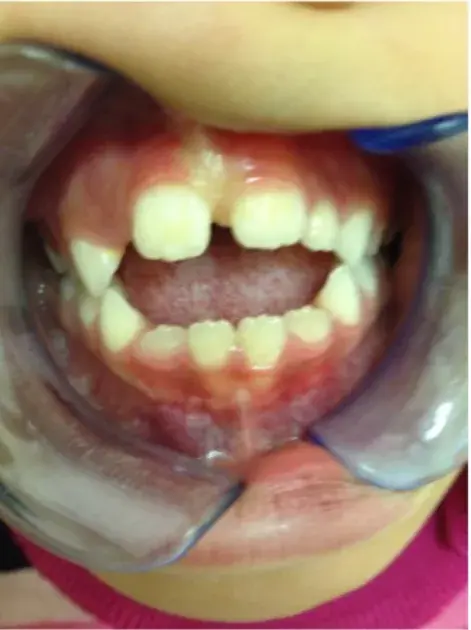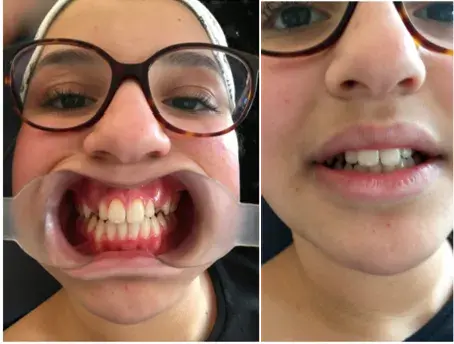Swallowing Rehabilitation in a Child with Narcolepsy and Cataplexy
Abstract
Narcolepsy with cataplexy is a rare and highly debilitating neurological disorder characterized by excessive daytime sleepiness, sleep attacks and cataplexy which correspond to sudden loss of muscle strength and preserved consciousness and are mainly triggered by positive emotions such as laughter or excitement or telling a joke). Cataplexy may range from a slackening of the facial muscles that is barely perceivable to a drop of the jaw or head, weakness in the neck, shoulders, knees or total collapse. A high number of pediatric cases are diagnosed and treated at the Reference Centre for narcolepsy at University Hospital Robert-Debré in Paris.
Introduction
It is of interest to observe that, among all the patients examined in an orthodontic setting, 50% failed to show abnormalities whereas deformations were major in the other half. Questioning the parents revealed that when occlusion was correct at the time when the first symptoms of the disease were expressed, no doubt related to physiological swallowing, there was no occlusal modification. On the other hand, pre-existing dysmorphic features were almost systematically worsened [1-3].
Case Study and Discussion
Related attention-deficit disorders make rehabilitation difficult, with a high rate of failure.
All conventional rehabilitation approaches involving increased awareness of the gestures performed and then of the gestures to be performed are doomed to failure, especially as only a very large number of repetitions could manage to engram the new practice in the long-term memory.
There was major incisive open bite, but it regressed progressively, reaching normal conditions of occlusion in 18 months. The patient is very absent-minded and does not feel concerned with her therapy and the very wide gap related to her tongue dysfunctions must be treated.
She did, however, accept to wear the Froggymouth for 15 minutes a day while watching television. The limbic system will assimilate this fun activity with a reward, a decisive element in automation.
Placed at a distance from the receiver, the gaze is horizontal as is the lingual plane. Once the device is installed, she can no longer swallow her saliva with her usual programme, but swallowing is a vital function that will lead to an immediate reaction in the brain stem to find another muscle dynamic to be able to swallow.
The patient continues to watch her programme and doesn't even notice these changes; as the facial nerve's activity is inhibited the trigeminal nerve takes over, facilitating dental occlusion, and the styloglossus comes into play for the physiological progression of the swallowing programme in a subject with teeth.
 Figure 1: Related attention-deficit disorders.
Figure 1: Related attention-deficit disorders.
 Figure 2: Open bite at the beginning of the treatment.
Figure 2: Open bite at the beginning of the treatment.
 Figure 3: Six month later.
Figure 3: Six month later.
 Figure 4 and 5: 15 month later.
Figure 4 and 5: 15 month later.
Conclusion
This bottom-up approach can be used successfully in children with sensory-motor disabilities. Froggymouth is the best approach to rehabilitating these children The effectiveness of this approach will, of course, be greater in children with no particular problems, starting at age 4; it could even be proposed to adults, more than 30% of whom have atypical swallowing and whose work does not leave them enough time to undertake rehabilitation over several months.
There are additional details about functional orthodontic treatment that you can obtain on our website.
Authors:
Fellus Patrick, Lecendreux Michel.
Bibliography:
Bear Mark F, Connors Barry W, Paradiso Michael A. Neurosciences. A la decouverte du cerveau. Ed. Pradel, 4th edition: 2016.
Fellus Patrick. Neurosciences et rééducation de la déglutition. Froggymouth une voie anoétique, Editions Orthopolis: 2019.
Houde Olivier. L’intelligence humaine n’est pas un algorithme. Editions Odile Jacob: 2019.

